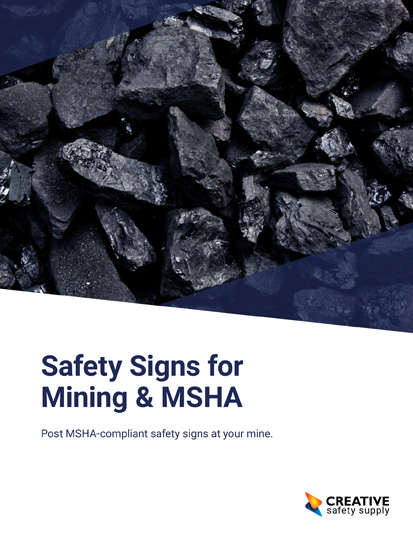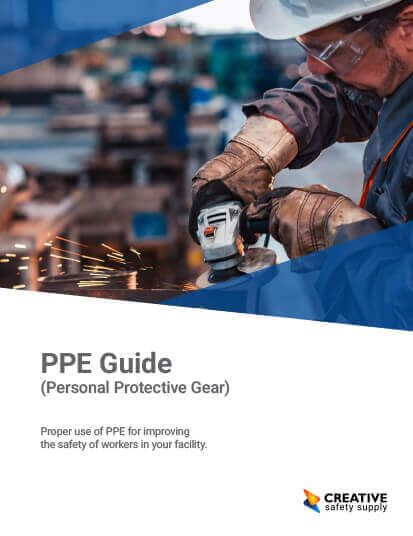
There are three different kinds of mining: surface, underground, and mill/plants. Although each come with their own risks and hazards, underground is arguably the most dangerous. Mining accidents happen every day worldwide and thousands are killed every year. Miners face many hazards in their workplace like deafening sounds, explosions, rock falls, and dust exposure. Fires and cave-ins are a hazard in in mines and safety managers and employers will need to be aware of fall hazards and struck-by hazards.
Hazard communication and the use of visual management is also an important component to mine safety. Using visual safety tools like signs and labels can increase safety awareness and keep workers alert of present dangers. Visual communication can warn workers of hazards, guide them to safe areas, or inform them of proper safety precautions.
A great use of safety signs in a mine is to remind workers about wearing personal protective equipment, a critical aspect to mining safety. From a hard hat down to the steel-toed boots, workers in mines will need to be outfitted with head-to-toe PPE. This also includes reflective clothing, gloves, and safety glasses.
Just like any other work safety program, employees will need to be trained. Federal law does require all miners receive both basic and annual refresher training and that mine operators must maintain an effective training program. Employers will need to train workers on hazards specific to their particular work site and the visual communication strategy put in place. Workers will need to understand how to don and doff PPE, where it is stored, and how to maintain the equipment. Specialized training should be offered for those working on dangerous machinery or with hazardous equipment.
Running a safe mining operation is no small feat! A mine will need to have a balance of administrative and engineering controls to ensure all bases are covered and employees are safe. While it is important to take extensive preventative measures, it is also important to be ready if disaster strikes. A mine should be equipped with emergency supplies and exits will need to be clearly marked in case of emergency exits. Pipelines can break, planned explosions can go awry, or a mine could cave in and trap the miners underground.
The safety of the mining industry in the United States rests largely in the hands of the Mine Safety and Health Administration (MSHA). MSHA enforces compliance with mandatory standards that have been developed to reduce the major risks miners face and reduce fatalities in the mining industry. Read through the standards and find resources and training materials at MSHA.gov.


